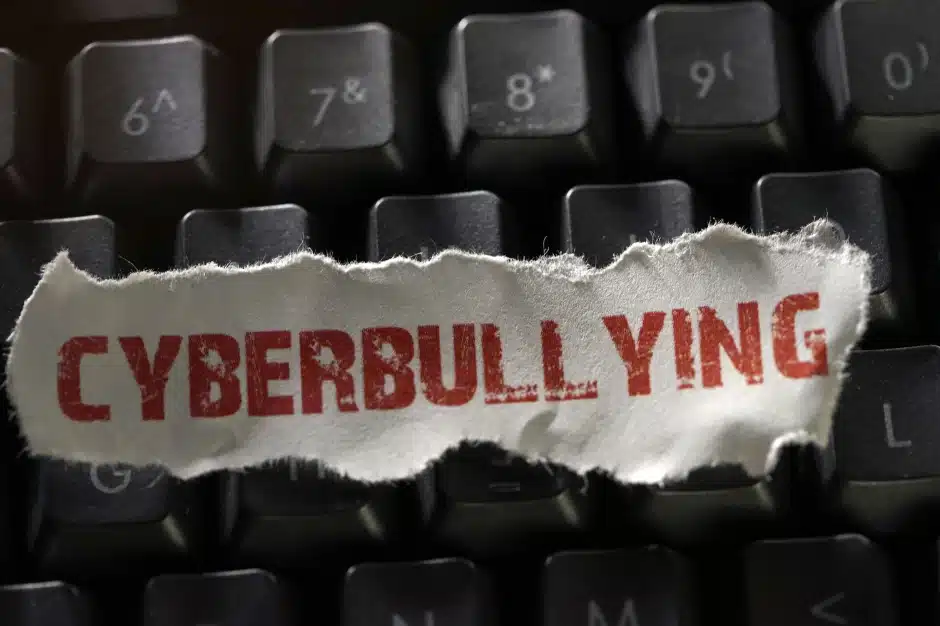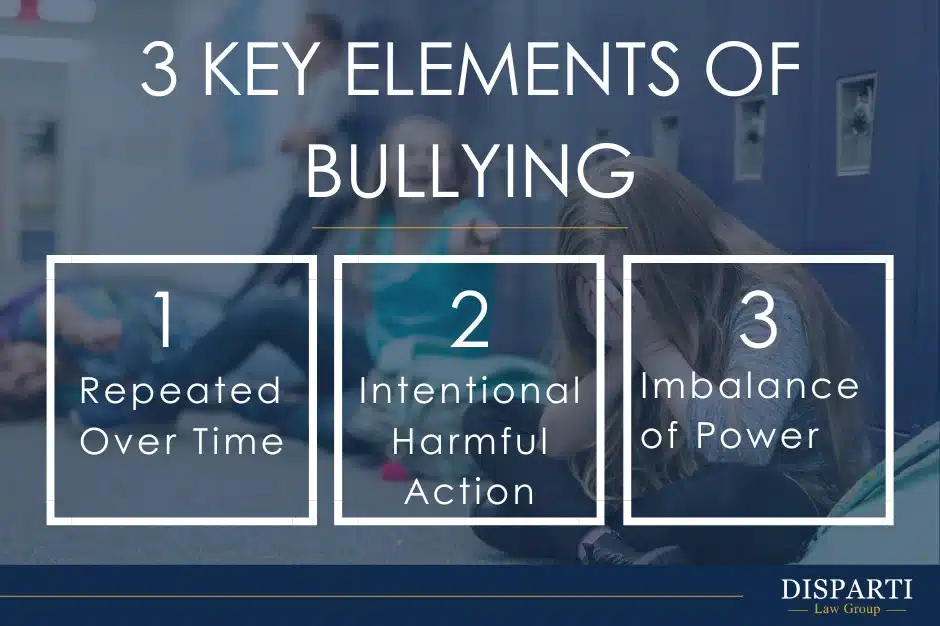 For some, life without the internet and technology is not something that requires any imagination — it was lived. There was no such thing as instant messages, social media, or mobile phones. But before the internet, there was no such thing as cyberbullying or online harassment.
For some, life without the internet and technology is not something that requires any imagination — it was lived. There was no such thing as instant messages, social media, or mobile phones. But before the internet, there was no such thing as cyberbullying or online harassment.
Today, young people especially face a type of bullying that, in many ways, can be more difficult to combat than traditional bullying. This article will discuss this damaging type of online harassment, how to identify it, and why it happens.
In This Article:
- What is Cyberbullying: Definition and Characteristics
- Cyberbullying vs. Traditional Bullying
- CommonTypes of Cyberbullying
- Cyberbullying and Social Media
- Cyberbullying and Video Gaming
- Is Cyberbullying Illegal and Should You Call a Lawyer?
What is Cyberbullying: Definition and Characteristics
The definition of cyberbullying varies among scholars. But generally, cyberbullying (or online bullying) can be defined as a deliberate, unwanted, and repeated act of aggression that occurs over digital devices such as computers, cell phones, gaming systems, or tablets.
Cyberbullying takes on several different forms — both direct and indirect — which can make it difficult to identify as online harassment. Generally, online bullying will have the following characteristics:
- intent
- aggression
- contact through electronic devices
- repetition
- causes harm to the target
Online bullying involves the use of technology to harass, intimidate, or embarrass someone. Cyberbullies often hide behind the anonymity of the internet, which can make it more challenging to identify and hold them accountable for their actions.
Ways a person can be bullied online or through electronic communications can include:
- sending hurtful messages or threats
- spreading rumors online
- sharing embarrassing photos or videos
- creating fake profiles to harass others.
Cyberbullying vs. Traditional Bullying
Bullying and cyberbullying are both forms of aggressive behavior that involve willful and repeated harm or distress to others. However, they employ different platforms and methods.
Traditional bullying typically refers to aggressive behavior that takes place in in-person settings, such as schools, neighborhoods, or workplaces. The hurtful behavior is direct and the bully interacts face-to-face with the victim.
Common forms of traditional bullying include:
- physical aggression
- verbal abuse
- social exclusion
- spreading rumors.
The effects of traditional bullying are often immediate and more tangible than online bullying. Additionally, aspects of online bullying are particularly different from traditional bullying including the role of bystanders and the presence of anonymity.
Bystanders
One significant difference between bullying and cyberbullying lies in the reach of the attacks. Traditional bullying is typically confined to specific physical settings and witnessed by a limited number of people. In contrast, cyberbullying has the potential to reach a much wider audience, as malicious content can be shared and spread rapidly across multiple online platforms.
Due to the digital nature of online bullying, harmful messages or content can persist indefinitely, making it difficult for victims to escape the consequences.
Anonymity
Another distinction is the lack of face-to-face interaction in cyberbullying. Traditional bullying often involves direct confrontation, where the bully and victim are physically present in the same space. However, cyberbullies may remain anonymous, and the absence of physical proximity can create a sense of detachment, potentially leading to a greater willingness to engage in aggressive behavior. Anonymity also creates a unique power imbalance as it is much harder for the victim to defend themselves.

Common Types of Cyberbullying
Again, online abuse can take on several different forms. Here are a few types of cyberbullying to be aware of for you or your teen.
- Harassment.
- Cyberstalking
- Doxing/Outing
- Exclusion
- Trickery
- False Profiles
- Trolling
- Flaming
- Masquerading
- Dissing
Keep in mind that cyberbullying is not limited to the ones listed. Speaking with a lawyer about bullying laws may be a helpful way to determine if you or your child are being cyberbullied and what steps to take to prevent it.
Cyberbullying and Social Media
Bullying online existed before the rise of social media. But today, social media websites play a major role in online abuse. The concept of “going viral” has made it easier for bullies to reach wider audiences, increasing the harm that can be done. Researchers have paid special attention to this and have sought to better understand how social media platforms have the potential to create a dangerous space for teens.
For example, some recent studies have examined the impact of memes and how they can act as a form of cyberbullying. These days, any person online can become a meme. But that individual may not have consented to their image or likeness being used. And what may seem like a joke for some can be extremely harmful to others involved.
Cyberbullying and Video Gaming
Cyberbullying in video games has become a concerning issue as online gaming continues to grow at a rapid pace. With the ability to communicate through microphones, players have the opportunity to engage in teamwork, establish friendships, and enhance the overall gaming experience. Unfortunately, some individuals exploit this technology to engage in toxic behavior and abuse other players verbally or through instant messaging.
Gaming cyberbullies not only tarnish the gaming environment but also affect the emotional well-being of the targeted individuals. The rise of such abusive practices highlights the need for stricter regulations and effective reporting systems to combat online abuse in video games.
Swatting
Swatting, a type of bullying prevalent in the online gaming community, is where an individual makes a false emergency call, prompting armed response units to be dispatched to a victim’s home or workplace. The perpetrator aims to induce panic and fear among their victims.
This reckless behavior not only puts innocent lives at risk but also places a significant burden on emergency services. Raising awareness about the consequences of swatting within the gaming community can help deter potential offenders and foster a safer gaming environment for all players.
Is Cyberbullying Illegal and Should You Call a Lawyer?
 Cyberbullying is indeed illegal. While there is no federal law prohibiting it, all 50 states have their own anti-cyberbullying harassment laws. Fortunately, the Cyberbullying Law in Illinois (Public Act 095-0849) covers online harassment in and out of schools and makes cyberstalking a class 4 felony. Needless to say, bullying is a serious offense.
Cyberbullying is indeed illegal. While there is no federal law prohibiting it, all 50 states have their own anti-cyberbullying harassment laws. Fortunately, the Cyberbullying Law in Illinois (Public Act 095-0849) covers online harassment in and out of schools and makes cyberstalking a class 4 felony. Needless to say, bullying is a serious offense.
Bullying online can take a serious toll on a person’s mental health. This can lead to feelings of isolation or self-harm. If you or your teen is a victim of online abuse, you may be able to sue the offending party for emotional and psychological damages. When bullying is severe, and especially if it results in self-harm or suicide, it’s time to reach out to a lawyer.
At Disparti Law Group Accident & Injury Lawyers, we are actively engaged in combatting bullying of any kind in Illinois. Middle school and high school students tend to be common targets of cyberbullying. This cannot stand, and Attorney Larry Disparti will fight for you.
Call (312) 600-6000 or schedule a FREE consult to discuss how our lawyers can help against bullying.









